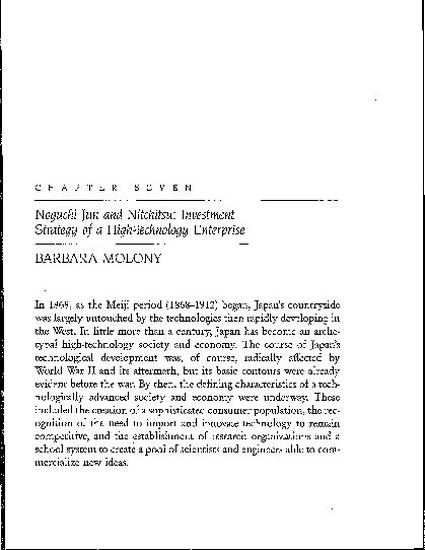
In 1868, as the Meiji period (1868-1912) began, Japan's countryside was largely untouched by the technologies then rapidly developing in the West. In little more than a century, Japan has become an archetypal high-technology society and economy. The course of Japan's technological development was, of course, radically affected by World War II and its aftermath, but its basic contours were already evident before the war. By then, the defining characteristics of a technologically advanced society and economy were underway. These included the creation of a sophisticated consumer population, the recognition of the need to import and innovate technology to remain competitive, and the establishment of research organizations and a school system to create a pool of scientists and engineers able to commercialize new ideas.
This chapter will examine the investment strategy of one of Japan's most important technology-intensive companies. It will indicate the important role played by this non-zaibatsu firm in high-technology innovation. It will also suggest some of the reasons for the interaction of government and business, and tell how one Japanese entrepreneur became involved in colonial expansion.

Copyright 1989 by the President and Fellows of Harvard College. Do not reproduce.